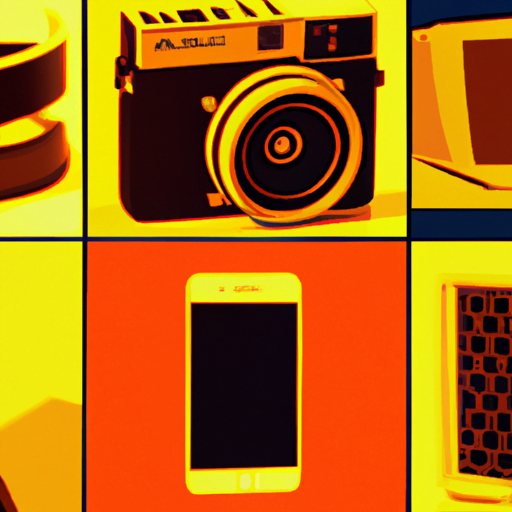
-
Table of Contents
Designing for Wearable Technology and Smart Devices

Wearable technology and smart devices have become increasingly popular in recent years, with the market expected to reach a value of $74 billion by 2025. As these devices continue to evolve and become more integrated into our daily lives, it is crucial for designers to understand the unique challenges and considerations involved in designing for wearable technology and smart devices. In this article, we will explore the key principles and best practices for designing user-friendly and visually appealing experiences for these devices.
The Importance of User-Centered Design
When designing for wearable technology and smart devices, it is essential to prioritize user-centered design principles. These devices are often worn or used in close proximity to the user’s body, making comfort and usability critical factors. By understanding the needs, preferences, and behaviors of the target users, designers can create experiences that seamlessly integrate into their daily routines.
One example of successful user-centered design in wearable technology is the Fitbit fitness tracker. Fitbit’s design team conducted extensive user research to understand the motivations and goals of their target audience. They found that users wanted a device that not only tracked their physical activity but also provided personalized insights and recommendations. Based on these insights, Fitbit designed a user interface that displayed relevant data in a clear and intuitive manner, allowing users to easily track their progress towards their fitness goals.
Designing for Small Screens
Wearable devices often have small screens, presenting a unique challenge for designers. It is crucial to optimize the user interface for these limited screen sizes while maintaining usability and readability. Here are some best practices for designing for small screens:
- Keep the interface simple and uncluttered: Avoid overwhelming the user with too much information or too many options on the screen. Prioritize the most important information and actions.
- Use clear and legible typography: Choose fonts that are easy to read on small screens. Avoid using fonts that are too small or have low contrast with the background.
- Utilize icons and visual cues: Icons can help convey information quickly and efficiently on small screens. However, ensure that the icons are easily recognizable and have clear meanings.
- Design for touch interactions: Wearable devices are often operated through touch gestures. Design buttons and interactive elements that are large enough to be easily tapped or swiped.
An excellent example of designing for small screens is the Apple Watch. Apple’s design team carefully considered the limited screen size of the device and created a user interface that utilizes clear typography, intuitive icons, and touch-friendly interactions. The interface is designed to display only the most relevant information, ensuring a seamless user experience on the small screen.
Seamless Integration with the User’s Environment
Wearable technology and smart devices have the unique advantage of being able to collect data from the user’s environment and provide personalized experiences based on that data. Designers should leverage this capability to create experiences that seamlessly integrate with the user’s environment and enhance their daily activities.
For example, the Nest Learning Thermostat is a smart device that learns the user’s temperature preferences and adjusts the temperature accordingly. The device’s design allows it to blend seamlessly into the user’s home environment, with a minimalist and unobtrusive appearance. The user can also control the thermostat remotely through a mobile app, providing convenience and flexibility.
Designing for Different Use Cases
Wearable technology and smart devices are used in a wide range of contexts and for various purposes. Designers must consider these different use cases and design experiences that cater to the specific needs and requirements of each use case.
For example, designing a smartwatch for fitness tracking requires a different approach than designing a smartwatch for productivity and communication. The fitness tracking smartwatch should prioritize health and activity-related features, such as heart rate monitoring and workout tracking. On the other hand, the productivity-focused smartwatch should prioritize features like notifications, calendar integration, and messaging capabilities.
Designing for Accessibility
Accessibility is a crucial consideration in any design project, and designing for wearable technology and smart devices is no exception. Designers should ensure that their designs are inclusive and accessible to users with disabilities or impairments.
Some best practices for designing for accessibility include:
- Provide options for adjustable text size: Users with visual impairments may require larger text sizes to read the content comfortably. Design interfaces that allow users to adjust the text size according to their preferences.
- Ensure color contrast: Use colors with sufficient contrast to ensure readability for users with color vision deficiencies.
- Consider alternative input methods: Some users may have difficulty using touch gestures. Provide alternative input methods, such as voice commands or physical buttons, to accommodate different user needs.
Google’s Android Wear platform is an excellent example of designing for accessibility. The platform offers various accessibility features, such as adjustable text size, high contrast mode, and voice commands, to ensure that users with disabilities can use the devices effectively.
Summary
Designing for wearable technology and smart devices requires a user-centered approach, considering factors such as comfort, usability, and integration with the user’s environment. Designers must optimize the user interface for small screens, utilize icons and visual cues, and design for touch interactions. They should also consider the different use cases and design experiences that cater to specific needs. Accessibility is another crucial consideration, and designers should ensure that their designs are inclusive and accessible to all users. By following these principles and best practices, designers can create compelling and user-friendly experiences for wearable technology and smart devices.
